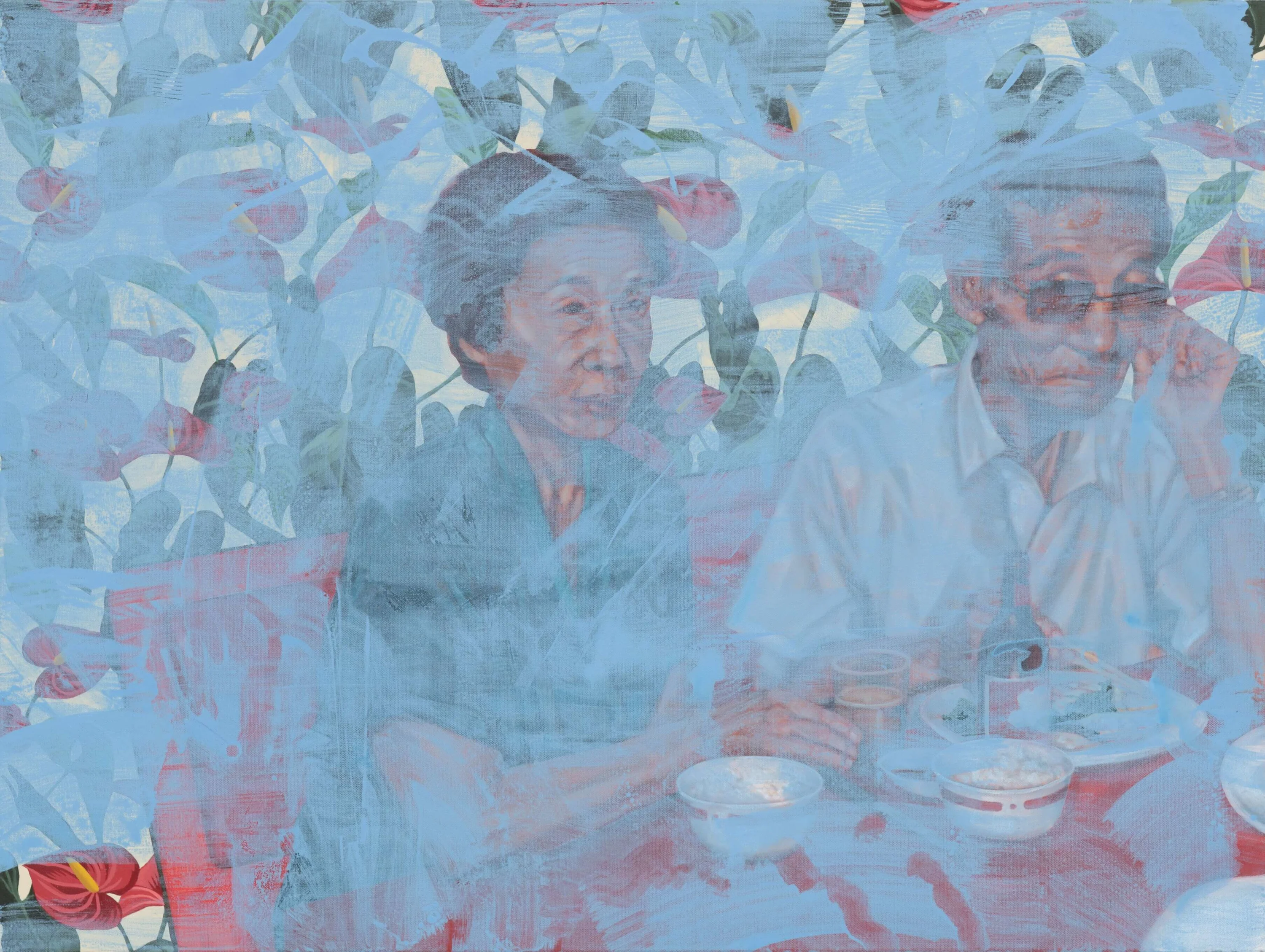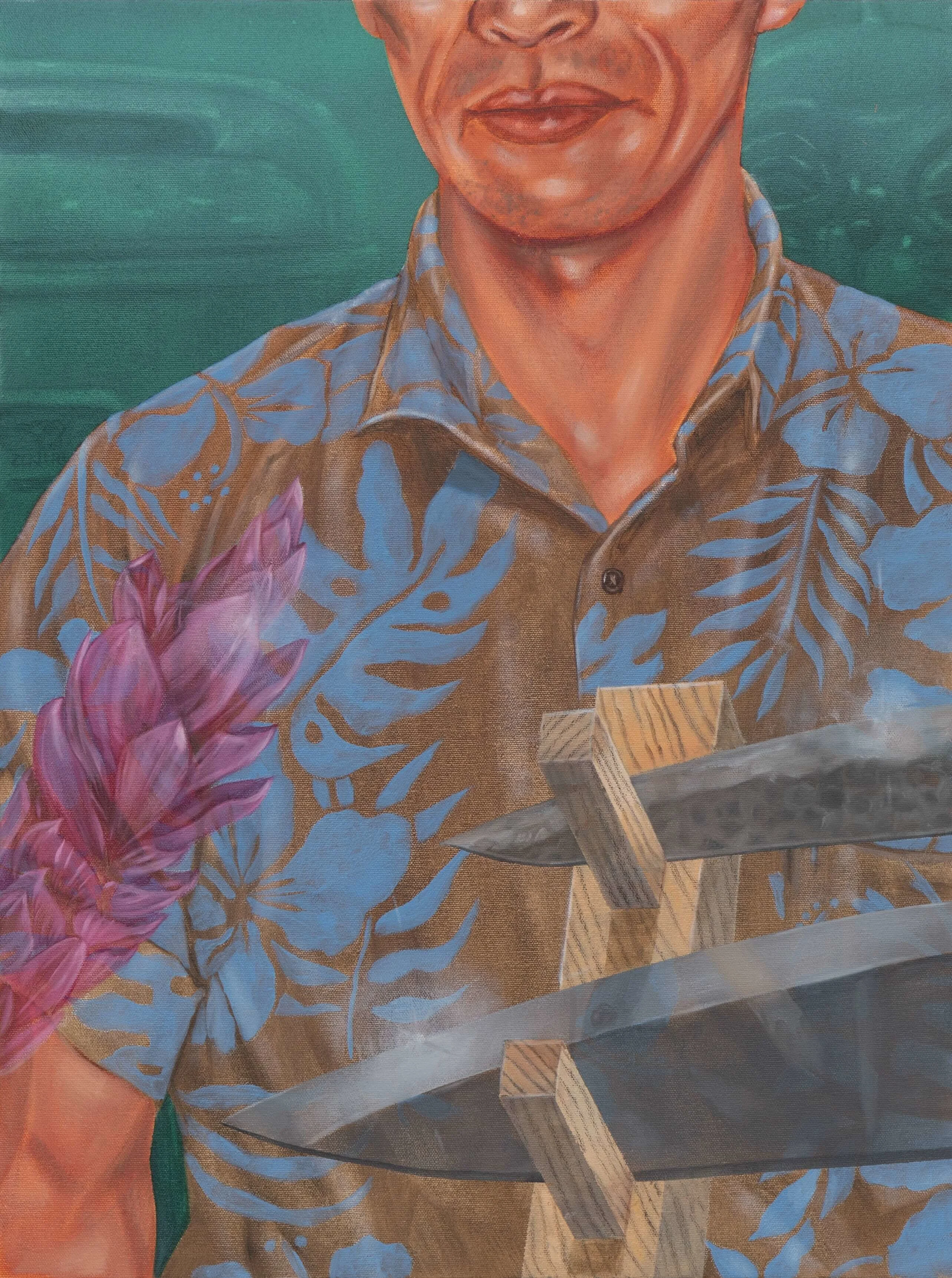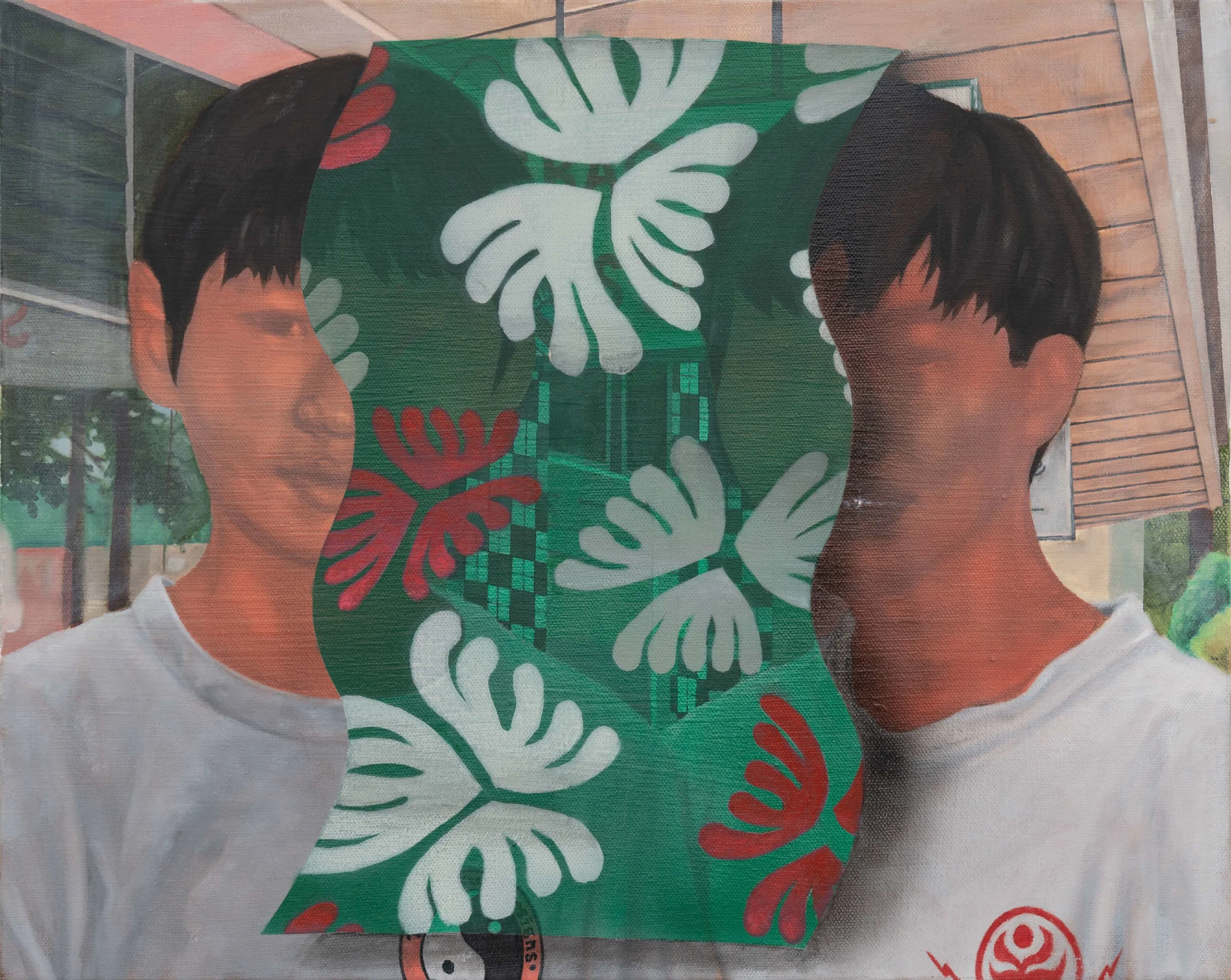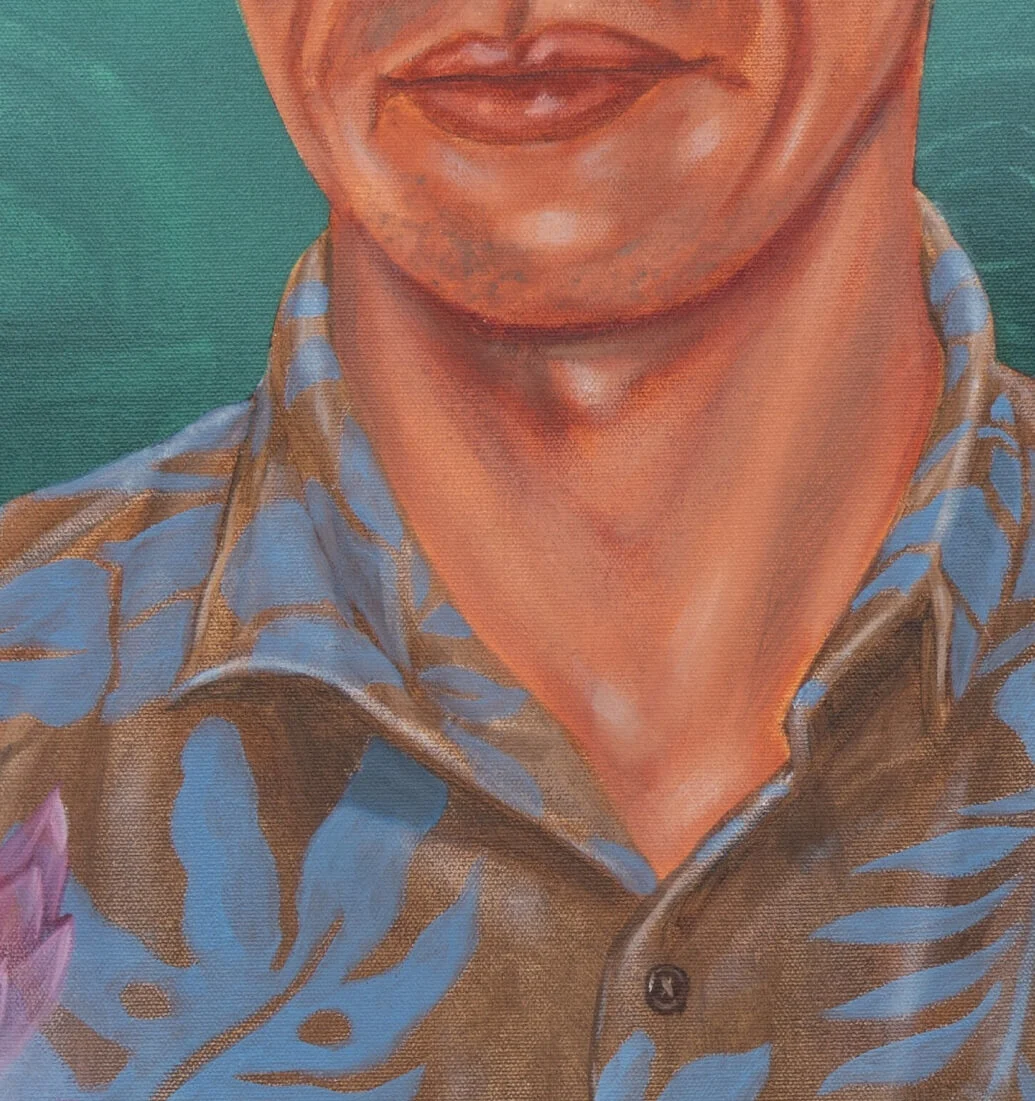
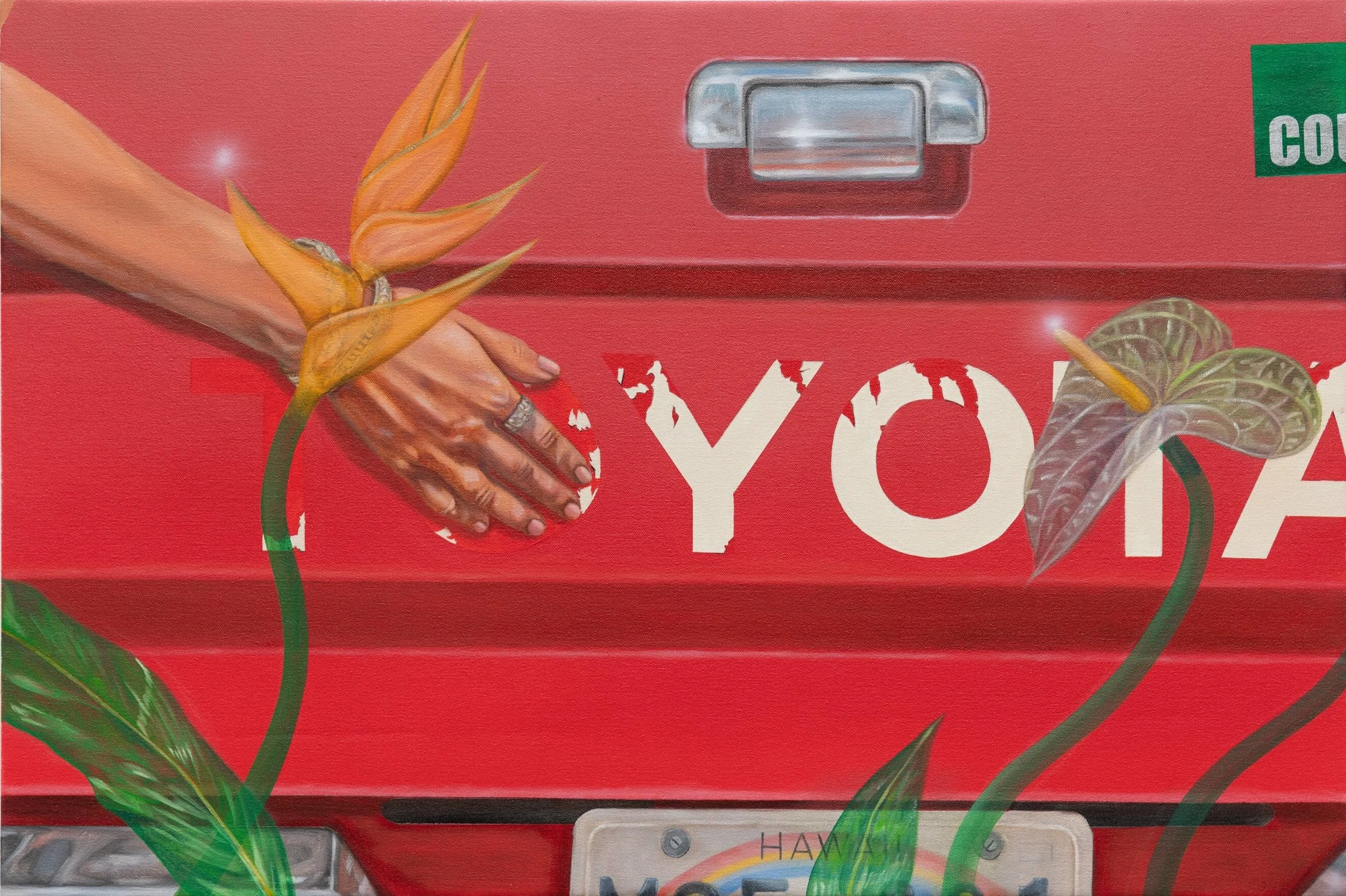
How do you communicate the expansiveness of a cross-cultural identity? Through unique visual and conceptual devices, artist Shingo Yamazaki explores the cultural nuances of a hybrid upbringing. Paying homage to the multiculturalism of tropical Hawai’i, he tells writer Jyni Ong about his nostalgia-driven, narrative artworks.
This is a feature made in collaboration with Platform, a site that offers people the opportunity to easily buy artworks from some of the most exciting contemporary artists in the world. We work with them each month to highlight one of their selected artists.
Throughout his warmly lit, nostalgia-fuelled paintings, the LA-based artist Shingo Yamazaki draws heavily on his multicultural upbringing. Born in Honolulu, Hawai’i, the Japanese Korean American painter grew up amongst a multitude of cultures. From the Creole pidgin English spoken to the local cuisines infused with global flavors, Shingo grew up surrounded by a nuanced amalgamation of cultures which have consequently informed his ideas of identity, home and belonging.
In turn, his story-led works explore various facets of this identity. He carefully chooses scenes peppered with poignant iconography to parallel his own hybrid upbringing. Shingo draws out the culturally charged energy in everyday items such as sandals, slippers and socks. In one artwork, he paints the famous Aloha shirt, but not for reasons you might expect. He pays tribute to the immigrant manufacturers in the 1940s and 50s who made the shirts from the same fabric as kimonos. Elsewhere, he paints ikebana (the ancient Japanese art of flower arranging) as a nod to his mother and grandmother who practiced the historic medium, weaving in the tropical fauna indigenous to Hawai’i as a subtle gesture to the crossing of cultures.
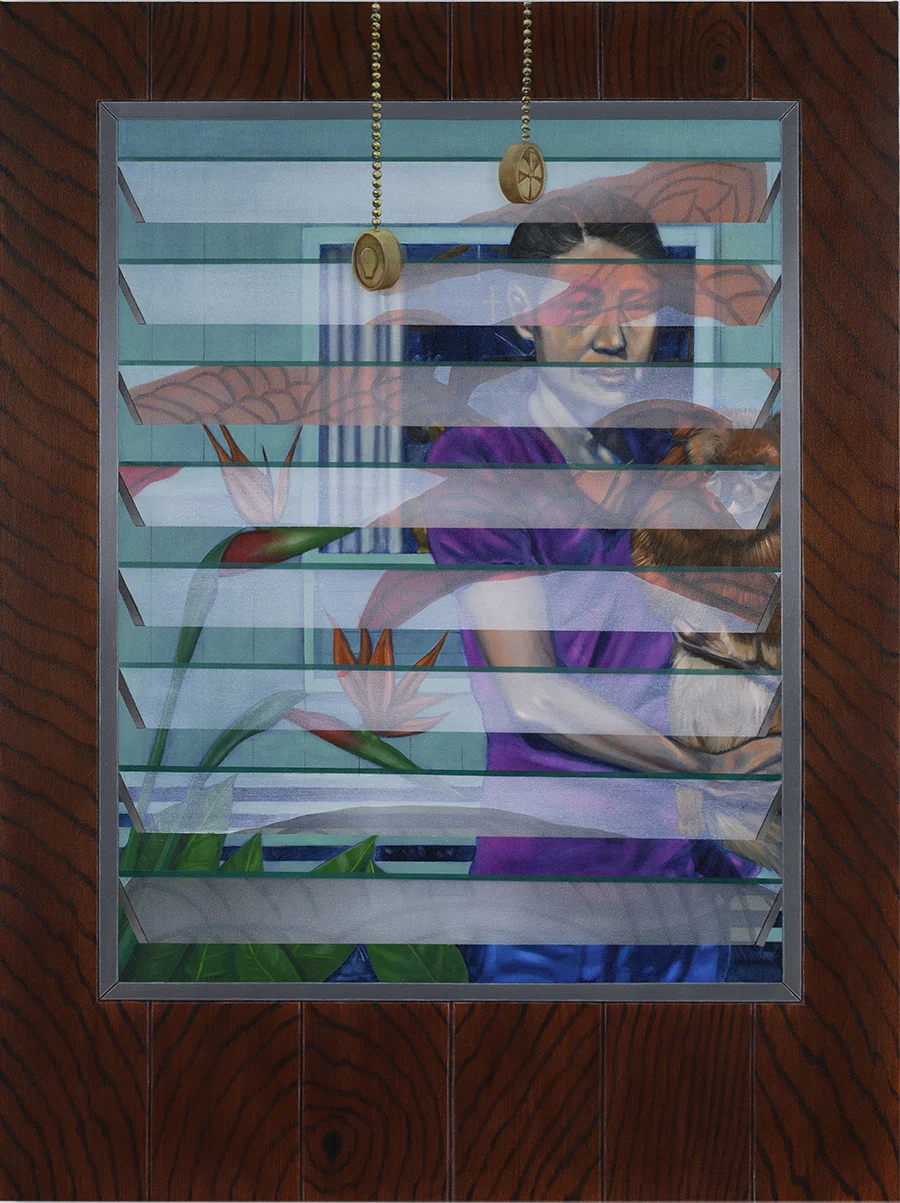
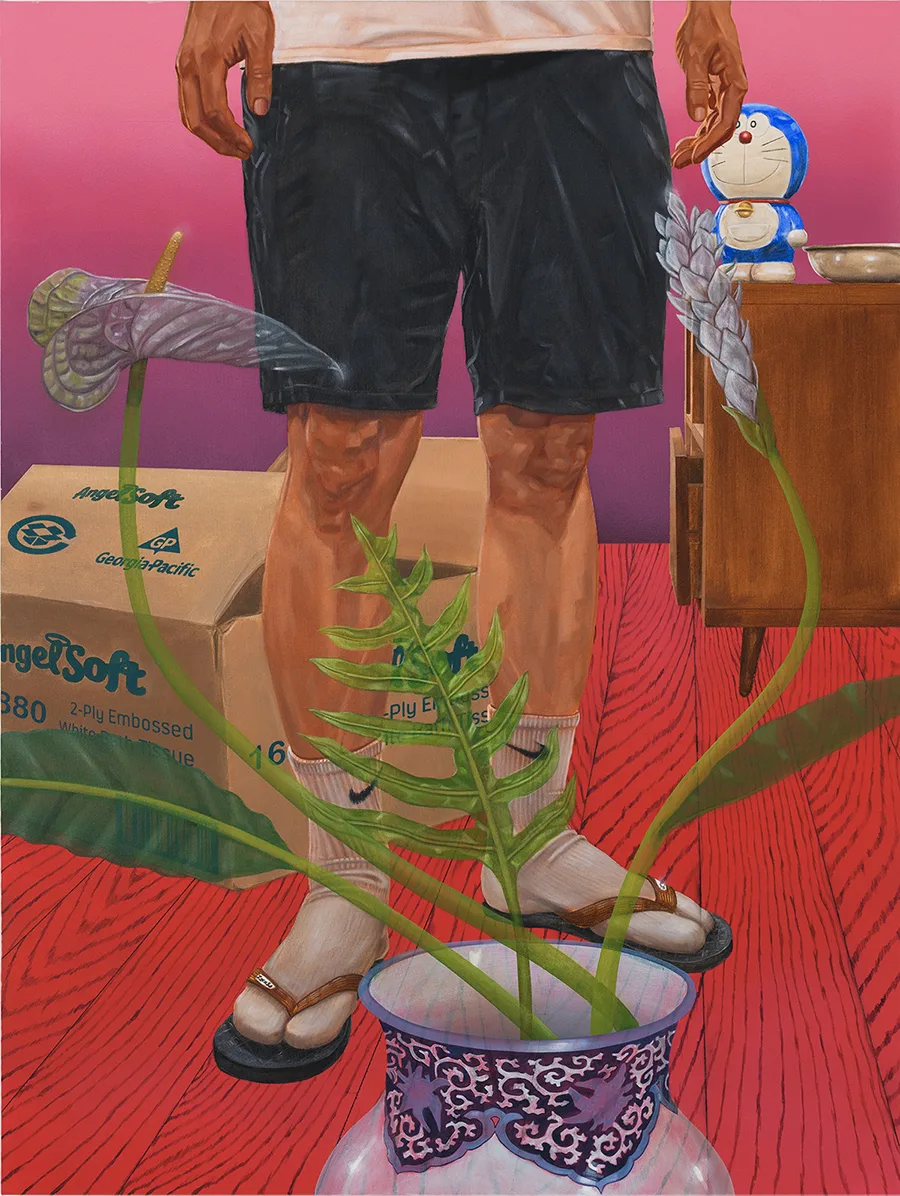
As a child, Shingo watched a lot of cartoons, but other than that, art didn’t become a serious venture until university. Whilst majoring in Architecture at the University of Hawai’i, he discovered “a deep connection” with painting. Like architecture, painting offered a way to build spaces. But instead of being grounded in a singular place, painting allowed for “constructing different parts of nostalgia and memory.”
Each painting takes approximately a little over a month to complete. Shingo prefers to work in the late hours, enjoying the quietness of night and becoming absorbed in the oil’s process. It takes a while for him to refine his concepts at first, taking his time to research specific objects in order to elevate them from out of the ordinary. “I try to be very aware and notice different subtleties within mundane scenes, intertwining them with my own personal stories,” he says. As the process unfolds, he lets the painting define its own narrative. Parts of Shingo’s personal history reveal themselves—a Doraemon figure here, a waving lucky cat there—making their way into empty spaces left purposely free for these precise reasons.
Shingo works a lot with transparencies, a conceptual and visual device employed to express duality. Through thin layers of paint, the viewer can observe both foreground and background as a duotone. The transparencies often take the form of abstract white washes energetically swept across the canvas, other times they are more formal elements of the compositions; screens or curtains for instance. “I create layers that both allow and deny access to visibility,” he says. “There’s a sense of presence but also absence. It’s protecting the figures but also leaving them vulnerable at the same time. There’s a push and pull between past and present, the real and imagined. It’s always shifting and moving.” The paintings relay a back and forth of how the artist feels at that moment. Simultaneously, it offers him a sense of catharsis; an indirect means of processing another prominent theme, generational trauma. “Really,” he goes on to say, “I’m digging into different places and points in time and seeing myself in different capacities.”
Platform
This is a feature made in collaboration with Platform, a site that offers people the opportunity to easily buy artworks from some of the most exciting contemporary artists in the world. We work with them each month to highlight one of their selected artists.


